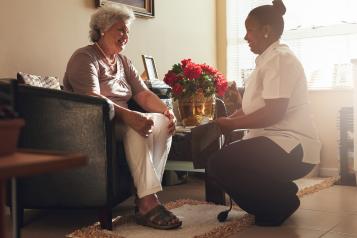Do you understand how hospitals, GPs and care services are changing in your area?
To help overcome these issues, health and social care services are undergoing significant changes to become more integrated and better at providing the support that local people want. To make this happen, it is vital that services talk to people to find out what they need and then use this information to provide more targeted care.
Sustainability and Transformation Partnerships (STPs) were introduced in 2015 to address these issues and improve how the NHS and council-run care services work, but two years on are they working for people?
In January 2018, we surveyed Healthwatch across the country to find out whether services are successfully involving the public. We mapped the responses against Healthwatch England’s five things communities should be able to expect, which were included in both NHS England’s guidance on public engagement for STPs and the next steps on the NHS five year plan.
In total we received responses from Healthwatch covering 40 of the 44 STP areas. We saw some good examples of community engagement working well. However, while the national guidance is being used in part, it was clear that no area is following it completely.
Drawing on our five principles for good engagement, here’s what Healthwatch told us could be improved:
1. The reasons for change need to be clearly set out so that people can understand both the current situation and why things might need to be done differently.
Although there is an overall willingness to engage communities, the organisations that plan services don’t always speak plainly so that everyone can understand.
The 12-week consultation brought things to the public attention, but not as far as we would have liked. The inaccessibility of some official documents - not in plain language, and full of what some people call ‘waffle’ - was widely criticised.
2. From the start, patients and the wider public should be involved in designing and discussing possible solutions to the challenges communities face.
Even though NHS England guidance sets out how to involve people in reforms, some Healthwatch said services are reluctant to do so and because of this people are not being involved early enough.
Our experience tells us that by the time a change reaches public consultation there is very little chance of influence. However, if people were involved at a much earlier stage (e.g. part of identifying the issues) then their influence would have more impact.
3. STPs need to assess the impact on every section of the community and carry out work, especially with underrepresented groups, to find out what people think.
Over three quarters of the local Healthwatch who responded to our survey said they felt their STP had not effectively engaged local people to date.
Changing services affect everyone, so it’s important that people from every part of the community have a say on what they need from future health and care. If this isn’t done correctly, the people affected are left with little understanding of the reasons for change and can feel ignored.
Healthwatch Sutton commended their STP for "achieving what most don't" by having very good engagement with groups of people who are less likely to engage. However, even they felt the STP had been “pretty ineffective” at engaging with the general public and needed to put greater emphasis on this.
4. The public should be given enough time to consider the proposals on the table and provide feedback.
In general, the areas that have had more time to develop their plans by building on existing initiatives and relationships are more effective at integrating health and social care services. This includes time for the public to get involved and provide feedback. However, in some areas this isn’t always the case.
STPs are quite confusing to the public. (They) still shy away from an explicit conversation about service change and what it actually means for communities locally. The consultation is hurried and cursory.
5. The final plans should be published once they are agreed. Organisations in charge of the changes need to show how they have considered the feedback they have received, the difference this has made to their plans and how the impact of the changes will be tracked and reviewed.
While communication and engagement with communities is going well in some areas, more needs to be done to show people how their feedback and views are being used.
A local Healthwatch said “At the moment (feedback to communities) is a bit scant and last minute.”
Sharing our views with the Health Select Committee
Using the views from the survey of local Healthwatch, together with our wider work, we have helped to inform the Health Select Committee’s inquiry into whether STPs are working.
Read our full submission to the Health Select Committee’s inquiry

